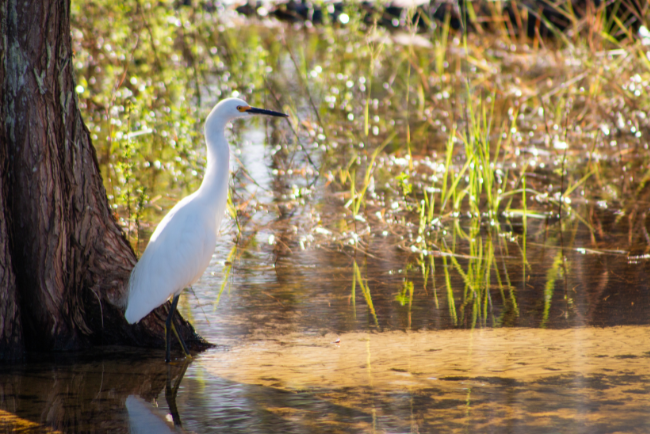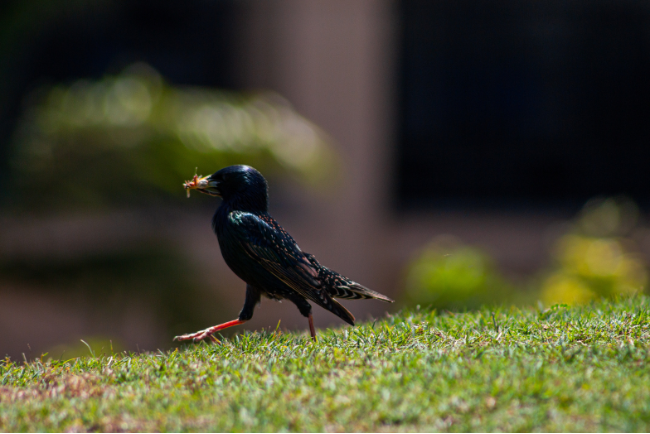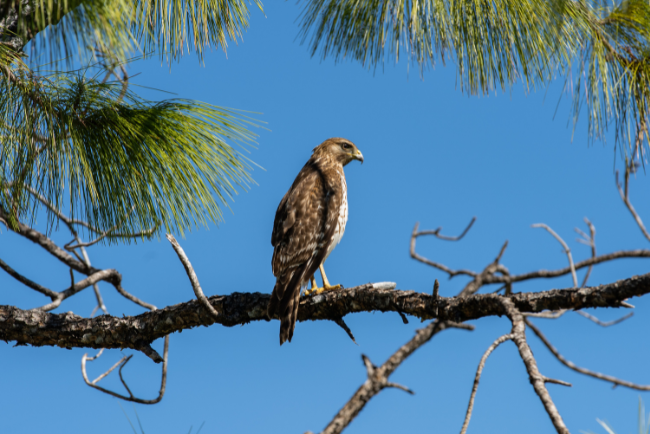Discover the Wild Side of Olde Cypress
Happy Wildlife Wednesday!
The Club at Olde Cypress is a haven for all sorts of wonderful wildlife and we love seeing these beautiful creatures whenever they feel like visiting. In this post, our resident nature aficionado, Brad Haynes, shares some fascinating info about the many different birds that frequent our grounds. Check out which ones you've spotted and, maybe, which you're hoping to peep next.
Red-shouldered Hawk
This majestic woodland bird has a distinctive call that you might hear before you see anything. Listen for a "shrill scream, kee-yeeear, with a downward inflection."
Brad says: We have quite a few of these powerful predators. They can often be seen near holes 13 and 14 as these are two of the Club's three preserve holes with no homes around them.

White Ibis
Well-known in Florida, these waders often travel in large colonies. They are very social so smaller wading birds "may follow them to catch prey stirred up by the ibises."
Brad says: Ibises help Olde Cypress because they eat mole crickets, which burrow underground and can cause major problems for golf courses in Naples. It's a win-win because the birds get a free cricket buffet and we get free pest removal!
Mottled Duck
You'll usually find these ducks in pairs or small groups which differentiates them from most waterfowl that travel in larger flocks.
Brad says: We sometimes see them in flight in groups of two to 10, but mostly in smaller groups. These are a non-migratory bird, are indigenous to Florida, and look similar to a hen mallard.
Loggerhead Shrike
Though small in size, this is a "predatory songbird [that] watches from a wire or other high perch, then pounces on its prey"!
Brad says: You can recognize these birds by a black band across their eyes. They are skilled hunters who catch their prey (insects, lizards, and small reptiles) and impale them on a tree spike before eating them.
Eastern Bluebird
These little birds need cavities to build their nests so it has become common for people to build "bluebird trails" (multiple nesting boxes near each other) to help ensure that they find a safe spot.
Brad says: Most are migratory so we have some seasonal residents as well as a few year-round residents.
Eastern Screech Owl
Ironically, you won't hear any screeching from this small member of the owl family. Instead, listen for "whinnies and soft trills" at dusk as it is a bird of the night.
Brad says: We build and maintain treehouses around the property that these native owls use so we have babies just about every year! We have a specialist visit the club annually (usually in February or March) to host a two-hour daybreak birding tour and wildlife habitat educational session so keep your eyes peeled for this opportunity!

Purple Martin
Like Bluebirds, they use cavities to nest and "Martin housing has a long history: some Native American tribes reportedly hung up hollow gourds around their villages to attract these birds."
Brad says: The ones we have in South Florida come to us the first week in February and leave the first part of July to go to Brazil. We have two birdhouses for them, and they have 12 separate units so 12 mating pairs that can use one box (it's a Martin condo!). They were all filled up this past year, so we're adding a third birdhouse!

Osprey
This bird is so unique in its appearance and hunting style that it has been "placed in a separate family of its own" (it was formerly categorized with other hawks). Osprey eat almost only fish and are skilled at flying low over the water and "plunging feet-first to catch fish in its talons."
Brad says: We have a resident pair who had 2 fledglings this year! They can often be seen near the tallest pine tree around the #1 tee and #9 green (which you can see from our clubhouse).